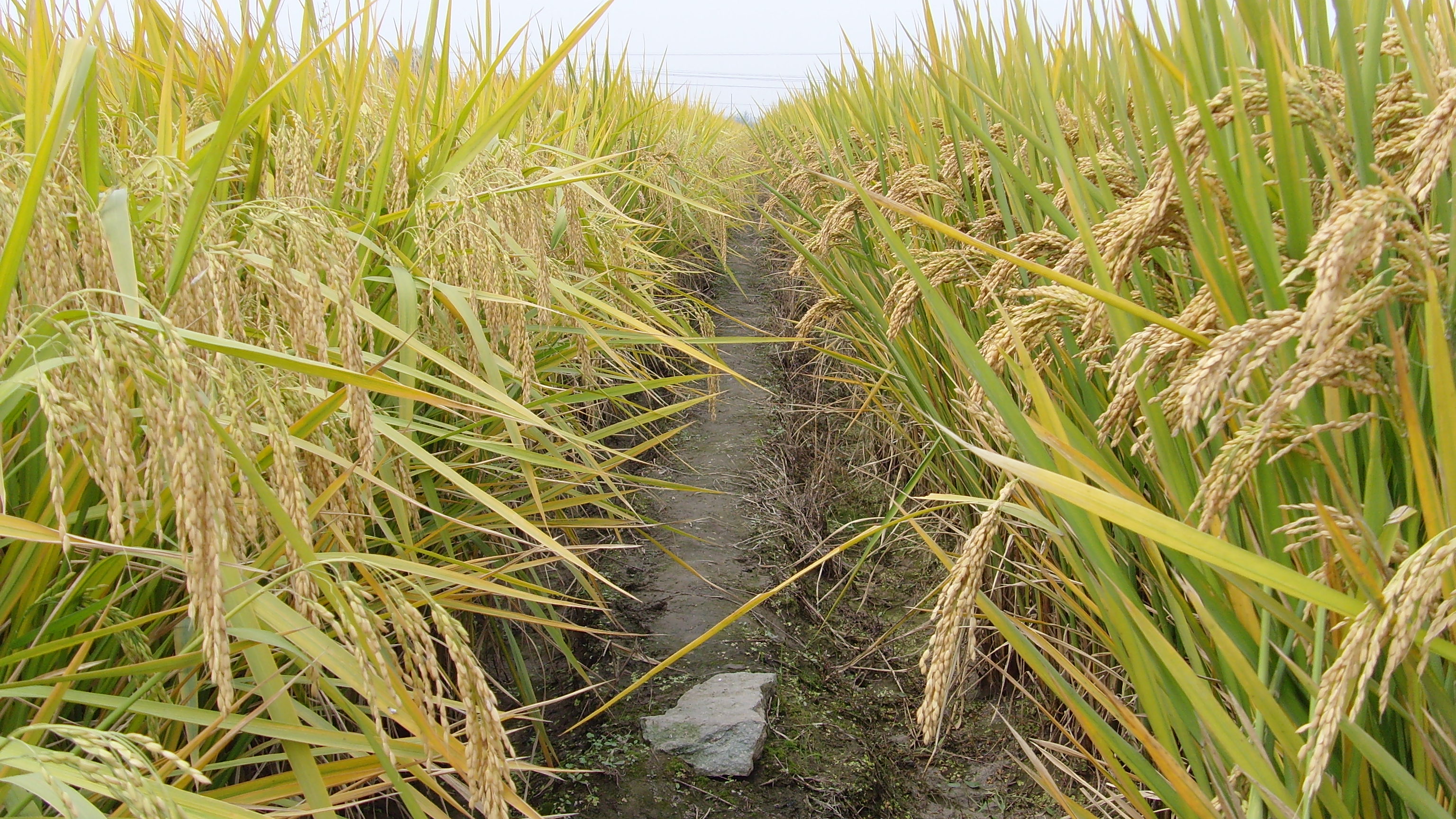中科院曹晓风组在PNAS发表表观遗传调控水稻重要农艺性状机制文
中国科学院遗传与发育生物学研究所曹晓风课题组在新研究中揭示,依赖酶OsDCL3a的24-nt 小分子RNA主要通过调控转座子旁临基因的表达进而对水稻重要农艺性状精细调控。相关文章发表于于2014年2月19日的《PNAS》 杂志上。

中科院曹晓风组在PNAS发表表观遗传调控水稻重要农艺性状机制文章
转座子(transposon)是一段自身能够插入到基因组上的DNA片段,上世纪40年代,芭芭拉?麦克林托克(Barbara McClintock)首先在玉米中发现了转座子。从简单的细菌到复杂的人类,转座子广泛存在。转座子随机插入到重要基因中,会引发疾病、癌症和其他生理缺陷。DNA甲基化、组蛋白修饰和小分子RNA等表观遗传修饰严格控制转座子沉默。
水稻是重要的粮食作物和单子叶模式植物,水稻基因组超过35%的序列由转座子和重复序列构成。曹晓风实验室前期工作发现,DNA甲基化、组蛋白甲基化和组蛋白去甲基化调控水稻Tos17和Karma转座子活性;但小分子RNA对水稻转座子及其旁邻基因的表观遗传调控还不清楚。
曹晓风课题组通过对负责加工产生小分子rna的酶OsDCL3a的研究,揭示依赖OsDCL3a的24-nt 小分子RNA主要通过调控转座子旁临基因的表达进而对水稻重要农艺性状精细调控。
研究人员发现,水稻OsDCL3a RNAi株系表现出株高降低、叶夹角变大以及穗长变短的多效发育表型。依赖OsDCL3a的24-nt小分子RNA主要来源于水稻基因组上的重复序列,特别是MITE类转座子位点。这些24-nt 小分子RNA通过介导H3K9me2等异染色质修饰调控旁邻基因的表达,其中包括多个调节赤霉素和油菜素内酯平衡的关键基因。
这些基因在水稻株高和叶夹角等重要农艺形状的形态建成中发挥重要作用。该工作揭示了24-nt小分子RNA调控水稻基因组中的MITE类转座子及其附近基因表达的表观遗传调控基础。
24-nt小分子RNA调控转座子进而调控重要农艺性状,为进一步从表观遗传角度进行水稻改良及分子设计育种提供新的线索和手段。MITE类转座子在动、植物中广泛存在,该机制很可能不仅在水稻、玉米等农作物中是保守的,还可能为肿瘤发生等研究提供重要线索。
曹晓风课题组的博士研究生魏丽亚,顾连峰博士和宋显伟博士为共同第一作者。该研究得到了国家重点基础研究计划973、转基因专项和国家自然科学基金委项目的资助。
原文摘要:
Dicer-like 3 produces transposable element-associated 24-nt siRNAs that control agricultural traits in rice
Liya Wei, Lianfeng Gu, Xianwei Song, Xiekui Cui, Zhike Lu, Ming Zhou, Lulu Wang,Fengyi Hu, Jixian Zhai, Blake C. Meyers and Xiaofeng Cao
Transposable elements (TEs) and repetitive sequences make up over 35% of the rice (Oryza sativa) genome. The host regulates the activity of different TEs by different epigenetic mechanisms, including DNA methylation, histone H3K9 methylation, and histone H3K4 demethylation. TEs can also affect the expression of host genes. For example, miniature inverted repeat TEs (MITEs), dispersed high copy-number DNA TEs, can influence the expression of nearby genes. In plants, 24-nt small interfering RNAs (siRNAs) are mainly derived from repeats and TEs. However, the extent to which TEs, particularly MITEs associated with 24-nt siRNAs, affect gene expression remains elusive. Here, we show that the rice Dicer-like 3 homolog OsDCL3a is primarily responsible for 24-nt siRNA processing. Impairing OsDCL3a expression by RNA interference caused phenotypes affecting important agricultural traits; these phenotypes include dwarfism, larger flag leaf angle, and fewer secondary branches. We used small RNA deep sequencing to identify 535,054 24-nt siRNA clusters. Of these clusters, ∼82% were OsDCL3a-dependent and showed significant enrichment of MITEs. Reduction of OsDCL3a function reduced the 24-nt siRNAs predominantly from MITEs and elevated expression of nearby genes. OsDCL3a directly targets genes involved in gibberellin and brassinosteroid homeostasis; OsDCL3a deficiency may affect these genes, thus causing the phenotypes of dwarfism and enlarged flag leaf angle. Our work identifies OsDCL3a-dependent 24-nt siRNAs derived from MITEs as broadly functioning regulators for fine-tuning gene expression, which may reflect a conserved epigenetic mechanism in higher plants with genomes rich in dispersed repeats or TEs.

